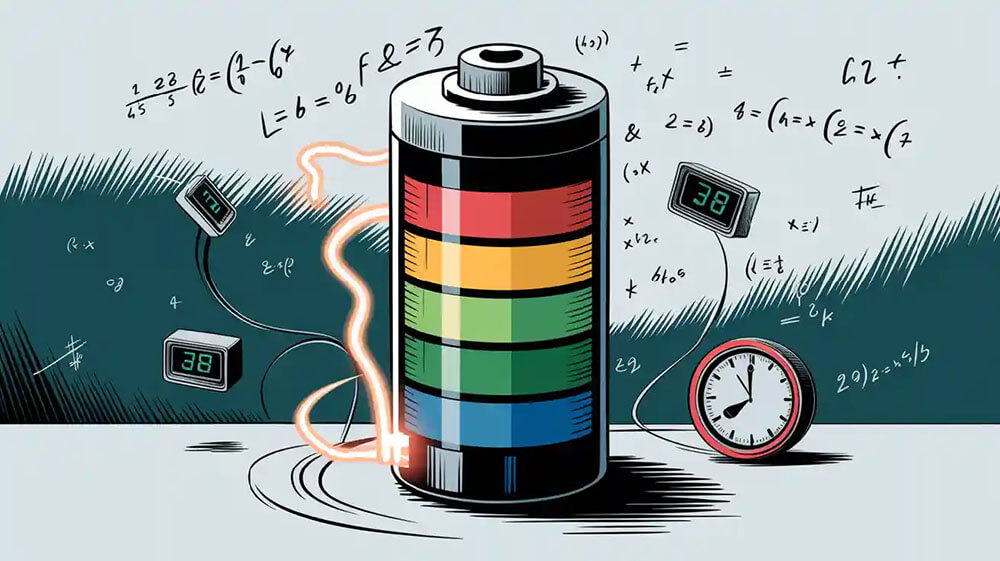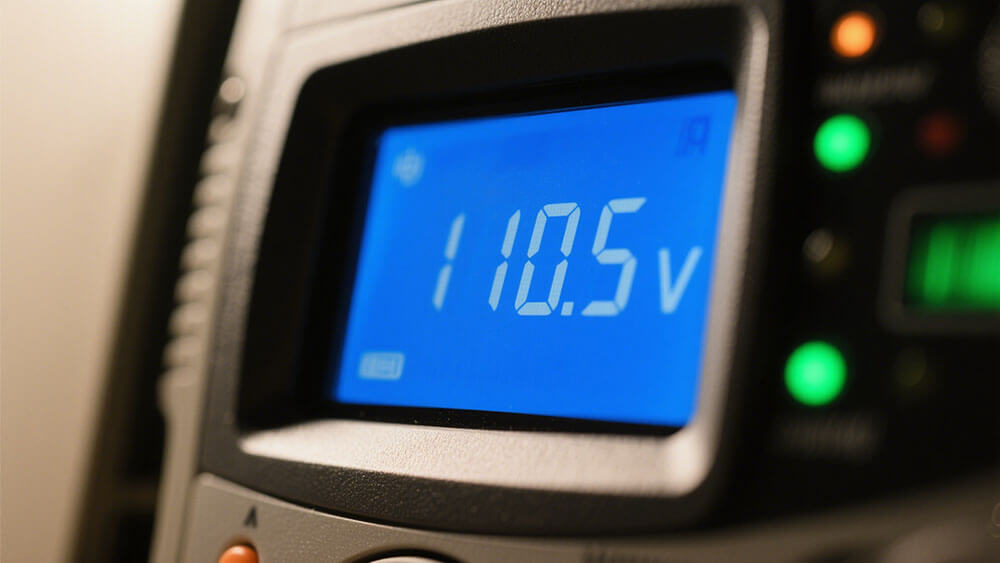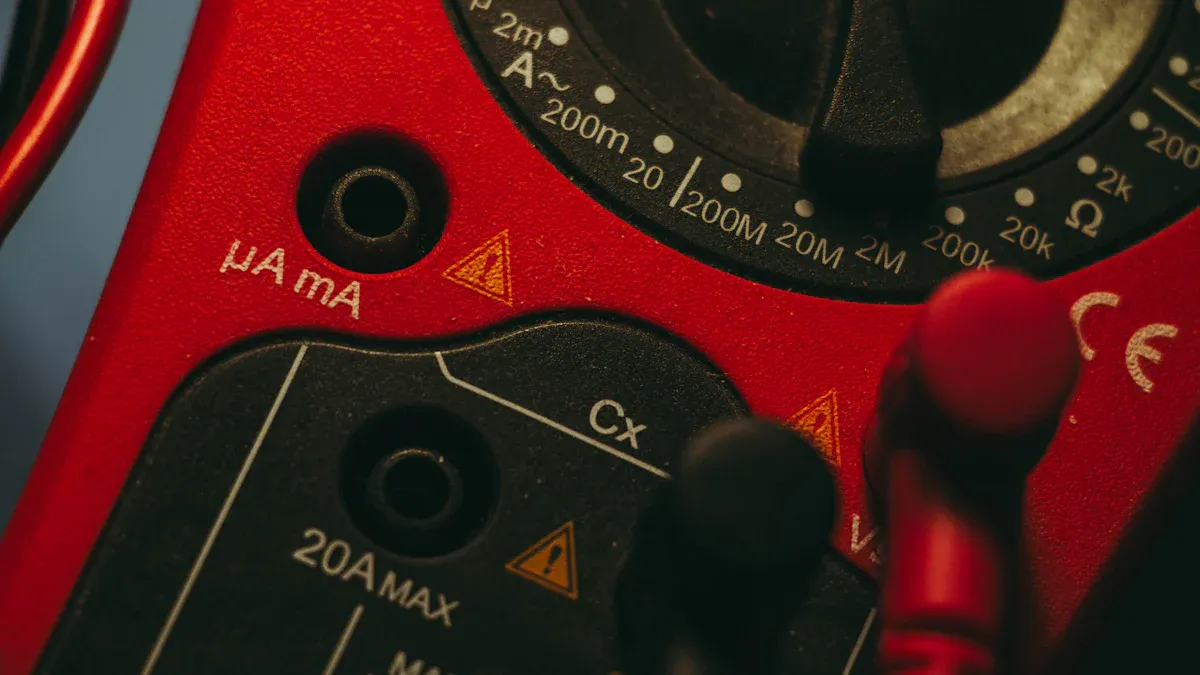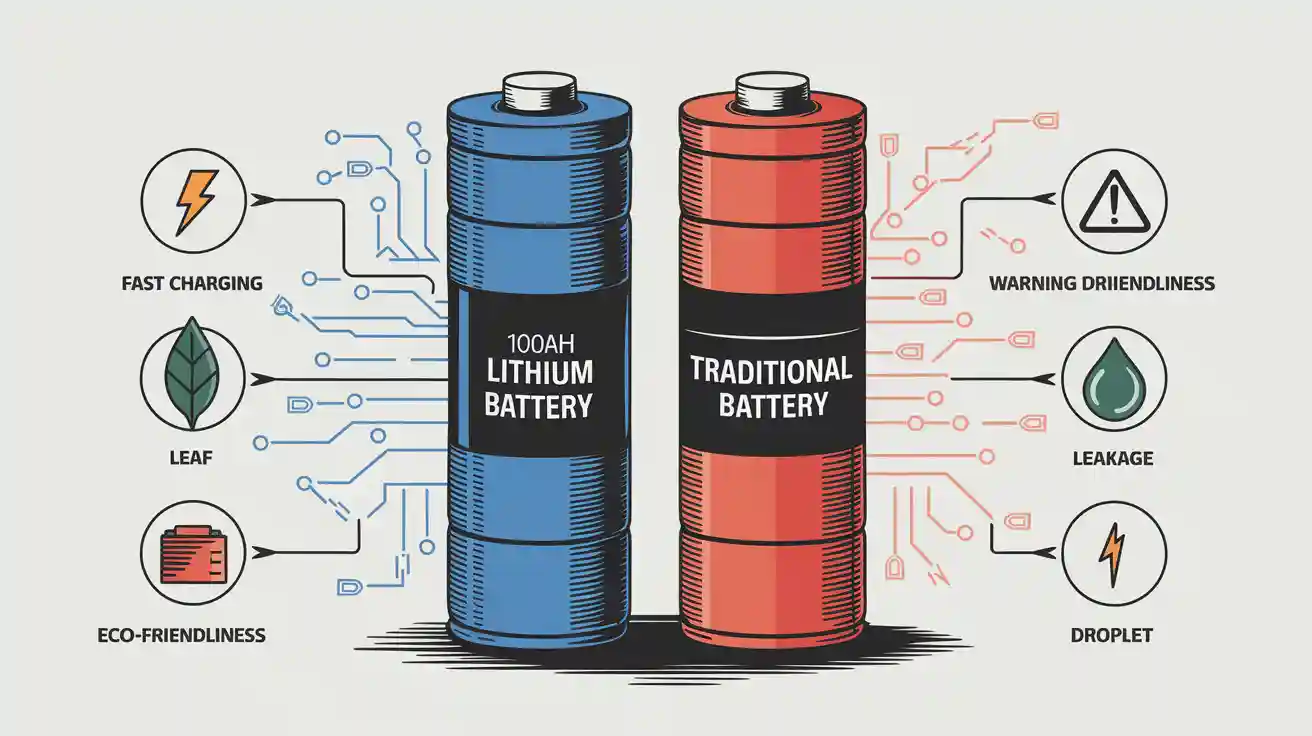Contents

When you hear the term “true ampere-hours,” it refers to the actual capacity of a battery to deliver current over time in real-world conditions. Unlike theoretical values, these measurements account for factors like temperature and discharge rate, which significantly impact performance. Understanding ampere hour meaning is essential for selecting the right battery for your needs.
A comprehensive battery aging dataset, containing over 3 billion data points, reveals how amp hour ratings vary under diverse operating conditions. This data helps predict capacity changes and optimize usage strategies.
Choosing a battery requires more than just knowing its amp hour rating. You must consider how real-world conditions influence its ampere hour capacity to ensure optimal performance.
Key Takeaways
True ampere-hours show how much power a battery holds. It depends on things like temperature and how fast power is used. This helps you pick the right battery for your devices.
Use this formula to find amp hours: Ah = Current (amps) × Time (hours). This tells you how long the battery can run your device.
Temperature and power use affect how well batteries work. Very hot or cold places can lower battery power. Keep batteries in safe temperature ranges.
Part 1: Understanding True Ampere-Hours

1.1 What Are Amp Hours and Amp-Hours
Amp hours (Ah) measure a battery’s energy capacity, indicating how much current it can deliver over a specific period. For instance, a 5-Ah battery can provide five amps for one hour or one amp for five hours. This metric helps you understand the runtime and performance of a battery under ideal conditions.
However, amp-hours differ from true ampere-hours, which account for real-world variables like temperature, discharge rates, and battery condition. These factors significantly impact how long a battery can sustain its charge. For example, a battery rated at 100Ah may only deliver 50Ah of usable capacity due to depth of discharge (DoD) limitations. Lithium-ion batteries, such as LiFePO4 Lithium batteries, offer higher efficiency and usable capacity compared to lead-acid batteries, making them ideal for applications like medical devices, robotics, and security systems.
Tip: When selecting a battery, consider its amp hour rating alongside its efficiency under varying discharge rates. This ensures optimal performance for your specific application.
1.2 Why True Ampere-Hours Are Important for Battery Systems
True ampere-hours provide a realistic measure of battery capacity, helping you calculate battery capacity accurately for your needs. They account for variables like temperature and discharge rates, which affect battery runtime and efficiency. For example, Peukert’s Law demonstrates that higher discharge rates reduce usable energy due to increased internal resistance.
In industries like infrastructure and consumer electronics, understanding true ampere-hours ensures reliable battery life and performance. Lithium-ion batteries, with their ability to discharge up to 90% safely, outperform lead-acid batteries, which lose capacity under heavy loads. This makes lithium-ion batteries a preferred choice for applications requiring consistent runtime and higher Ah ratings.
Note: Lithium-ion batteries, such as NMC Lithium batteries, offer energy densities of 160–270Wh/Kg and cycle lives of up to 2,000 cycles, making them suitable for industrial and transportation applications.
1.3 Common Misunderstandings About Amp Hour Ratings
Many users assume that a battery’s amp hour rating reflects its full usable capacity. This misconception often leads to overestimating battery runtime. For example, lead-acid batteries should not be discharged below 50%, effectively halving their usable capacity. In contrast, lithium-ion batteries maintain close to their rated Ah under various loads, providing more reliable performance.
Another common misunderstanding involves discharge rates. Batteries with higher Ah ratings may not always deliver longer runtime if discharged at high rates. For instance, at C/5, a battery may provide 26.8Ah over five hours, while at C/100, it delivers 36Ah over 100 hours due to reduced heat generation.
Understanding these nuances helps you select the right battery for your application, whether it’s powering deep cycle batteries for industrial use or ensuring consistent runtime for medical devices.
Callout: Large Power offers custom battery solutions tailored to your specific needs.
Part 2: Calculating Ampere-Hours

2.1 The Formula for Amp Hours (Ah = Current × Time)
The formula for calculating amp hours (Ah) is straightforward:
Ah = Current (in amps) × Time (in hours)
This equation helps you determine the battery’s capacity to deliver current over a specific period. For example, if a battery provides 5 amps for 10 hours, its capacity is 50Ah. This calculation is essential for understanding how long a battery can power a device under ideal conditions.
In addition to this basic formula, you can use related equations to calculate energy stored in a battery or convert watt-hours to amp-hours. The table below summarizes these formulas:
Formula | Description |
|---|---|
E = V × Q | Calculates energy (E) in watt-hours, where V is voltage, and Q is charge in Ah. |
Q = Wh / V | Converts watt-hours (Wh) to amp-hours (Ah) by dividing Wh by the battery’s voltage. |
These formulas are widely used in industries like robotics, medical devices, and infrastructure to optimize battery performance. For instance, in robotics, precise calculations ensure that robots operate efficiently without unexpected power loss.
Tip: Always verify the voltage of your battery before performing these calculations to ensure accuracy.
2.2 Adjusting for Real-World Conditions (Temperature, Discharge Rate, etc.)
While the formula for amp hours provides a theoretical value, real-world conditions often reduce a battery’s true ampere-hours. Factors like temperature, discharge rate, and internal resistance significantly impact performance.
Temperature Effects:
Extreme temperatures can alter a battery’s capacity. For instance, cold environments reduce chemical activity, lowering the available amp hours. Conversely, high temperatures may increase capacity temporarily but accelerate wear and tear.Discharge Rate (C-rate):
The discharge rate, or C-rate, measures how quickly a battery is drained. Higher discharge rates lead to lower capacity due to internal losses. For example:At a 1C rate, a 100Ah battery should deliver 100 amps for one hour.
At a 2C rate, the same battery may only provide 80Ah due to increased heat and resistance.
Depth of Discharge (DoD):
Batteries like lead-acid lose efficiency when deeply discharged. Lithium-ion batteries, such as LiFePO4 Lithium batteries, maintain higher efficiency even at 90% DoD, making them ideal for applications requiring consistent runtime, such as medical devices.
Note: To maximize battery life, avoid operating at extreme temperatures or high discharge rates.
2.3 Example: Calculating Amp Hours for a Battery System
Let’s apply the formula to real-world scenarios:
Power Tool:
Battery capacity: 4000mAh (4Ah)
Device consumption: 500mA
Runtime: 4Ah ÷ 0.5A = 8 hours
Laptop:
Battery capacity: 5000mAh (5Ah)
Device consumption: 1000mA
Runtime: 5Ah ÷ 1A = 5 hours
Solar Panel Battery:
Battery capacity: 150Ah
Power consumption: 300W
Voltage: 12V
Runtime: (300W ÷ 12V) ÷ 150Ah = 0.5 hours
These examples highlight how amp-hour calculations vary across devices. For industrial applications, such as deep cycle batteries, accurate calculations ensure reliable performance. Learn more about custom battery solutions here.
Callout: Always consider real-world factors like temperature and discharge rate when calculating amp hours to ensure accurate results.
Part 3: Factors Influencing True Ampere-Hours

3.1 How Temperature Impacts Amp Hour Ratings
Temperature plays a critical role in determining a battery’s true amp hours. Extreme cold slows down the chemical reactions inside the battery, reducing its capacity. For example, a lithium-ion battery operating in sub-zero temperatures may deliver only 70% of its rated amp-hour capacity. On the other hand, high temperatures can temporarily increase capacity but accelerate degradation, shortening the battery’s lifespan.
For applications in medical devices, where consistent performance is vital, maintaining an optimal operating temperature is essential. Lithium-ion batteries, such as LiFePO4 Lithium batteries, are particularly well-suited for these scenarios due to their stability across a wide temperature range. However, even these batteries require proper thermal management systems to ensure reliable runtime.
Tip: Always store and operate batteries within the manufacturer-recommended temperature range to maximize their efficiency and lifespan.
3.2 The Role of Discharge Rate in Ampere-Hour Calculations
The discharge rate, or C-rate, significantly affects a battery’s amp-hour rating. A higher discharge rate reduces the usable capacity due to increased internal resistance and heat generation. For instance, a 100Ah battery discharged at a 1C rate (100 amps for one hour) may deliver close to its rated capacity. However, at a 2C rate (200 amps for 30 minutes), the capacity could drop to 80Ah.
For robotics applications, where batteries often face high discharge rates, selecting a battery with a higher ah rating ensures consistent performance. Lithium-ion batteries excel in these scenarios, offering better efficiency and runtime compared to lead-acid alternatives.
3.3 Comparing Amp Hours Across Battery Types (Lead-Acid, Lithium-Ion, etc.)
Different battery chemistries exhibit varying amp-hour performance, lifespan, and cost-effectiveness. Lithium-ion batteries outperform lead-acid batteries in most metrics, including energy density, cycle life, and cost per usable kWh.
For industrial applications, lithium-ion batteries provide a superior choice due to their longer lifespan and lower operational costs. Their ability to maintain a high amp-hour rating under various conditions makes them ideal for infrastructure projects and consumer electronics.
Note: When comparing battery types, consider not only the initial cost but also the total cost of ownership, including maintenance and replacement expenses.
Understanding true ampere-hours ensures you select the right battery for your needs from Large Power. Real-world factors like temperature and discharge rate significantly impact performance. Always evaluate these conditions when choosing a battery. Prioritize efficiency, lifespan, and application-specific requirements to maximize reliability and cost-effectiveness.
FAQ
1. What is the difference between amp hours and watt hours?
Amp hours measure current over time, while watt hours measure energy. Use the formula: Wh = Ah × Voltage, to convert amp hours to watt hours.
2. How does Peukert’s Law affect battery capacity?
Peukert’s Law explains how higher discharge rates reduce usable capacity. Lower discharge rates improve efficiency, ensuring batteries deliver closer to their rated amp hours.
3. Which battery type offers the best amp-hour performance?
Lithium-ion batteries outperform lead-acid batteries. They provide higher energy density, longer cycle life, and better efficiency under varying discharge rates and temperatures.
Tip: For professional guidance on lithium-ion batteries, visit Large Power.





